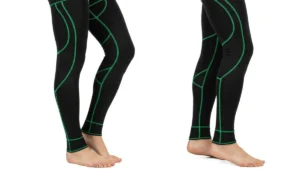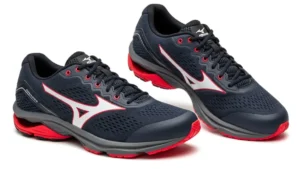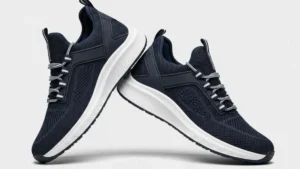
Why Runners Carry Water
The body’s demand during runs
Running increases your body’s fluid needs because sweat loss depletes water and electrolytes quickly. Even a 2% drop in body weight from fluid loss can affect endurance, focus, and speed. Carrying water helps maintain balance, keeps muscles fueled, and prevents overheating during effort.
When you run, your heart works harder, and blood flow shifts toward your skin to cool you down. This process drains fluids rapidly. Without replacing them, fatigue sets in faster. Runners carry water because it’s the simplest way to keep performance steady.
Risks of dehydration
Dehydration during runs leads to fatigue, dizziness, cramps, and heat-related illness. It reduces blood volume, strains the heart, and slows cooling. In severe cases, it can cause heatstroke or fainting, making hydration critical for both safety and performance.
When you’re dehydrated, your body can’t regulate temperature effectively. Your muscles struggle to contract, and your brain function slows down. That’s why runners who ignore hydration often feel “heavy-legged” or mentally foggy before they realize they’re in danger.
Common signs you’re not hydrated
The most common signs of dehydration while running include dry mouth, darker urine, dizziness, and sudden fatigue. If you feel lightheaded, stop sweating, or experience muscle cramps, your body is signaling that it’s running low on fluids.
Some signs are subtle, like a sudden drop in pace or irritability. Others are more urgent, such as confusion or chills despite heat. Runners who know these early cues can respond faster and avoid more serious health risks.
Should You Run With a Bottle of Water?
Short runs vs long runs
For short runs under 30 minutes, most people don’t need to carry water unless it’s very hot. For long runs over an hour, carrying a bottle becomes important to replace lost fluids and prevent fatigue. Duration is the deciding factor for most runners.
If you’re only jogging around the block or doing a light 20-minute run, pre-hydrating before you leave and rehydrating afterward is usually enough. But once you cross the 60-minute mark, fluid loss compounds, and your body can’t keep up without steady sipping.
Climate and temperature factors
Hot and humid conditions increase sweat rates, making it essential to carry water even for shorter runs. Cold weather reduces thirst signals, but you still lose fluids. Climate matters because it changes how fast your body depletes water, regardless of running distance.
Running on a summer afternoon feels completely different from a cool autumn morning. In heat, you sweat buckets, so hydration becomes urgent. In cold weather, dehydration sneaks up quietly because you don’t feel as thirsty. Carrying water accounts for both extremes.
Individual sweat rates and hydration needs
Every runner sweats at a different rate. Some lose a liter an hour, others much less. Carrying a bottle is necessary if you sweat heavily, lose salt quickly, or often feel drained mid-run. Your personal sweat pattern dictates your hydration strategy.
A good way to measure is to weigh yourself before and after a run. If you drop more than 2% of your body weight, you need more fluids mid-run. Sweat test data helps fine-tune how much water you should carry, so you’re not guessing.
The Best Ways to Carry Water While Running
Handheld water bottles
Handheld water bottles are the simplest and cheapest way to carry water while running. They’re light, easy to refill, and keep hydration within reach. Many runners prefer them for runs under 10 miles because they don’t require extra gear or complicated setups.
Most handheld bottles come with a strap so you don’t need to grip tightly. This reduces hand fatigue. They usually hold 12–20 ounces, enough for a mid-length run. The downside is your arm balance changes slightly, which can feel awkward on very long runs.
Waist belts and hydration packs
Waist belts and hydration packs allow runners to carry more water without using their hands. Belts usually hold one or two bottles, while hydration packs store a larger bladder with a tube for sipping. These options suit longer runs and trail running.
Waist belts are compact and good for distances of 10–15 miles. Hydration packs, which can carry up to 2 liters, are best for marathons or trail races where water stations aren’t available. Both options distribute weight better than holding a bottle in one hand.
When handheld bottles are better
Handheld bottles are better for runs under 60–90 minutes, especially on roads where water refills are available. They’re practical if you prefer light gear and don’t want straps or packs. Their simplicity makes them the go-to option for many road runners.
For example, if you’re running a 10K on a hot morning, a handheld bottle keeps you covered without adding bulk. But if you’re tackling a trail half marathon, you’ll likely need a belt or pack. The best method depends on distance and environment.
Choosing the Right Bottle for Running
Size and weight balance
The best running bottle balances size with weight. A 12–16 oz bottle is ideal for most runs because it holds enough fluid without weighing you down. Larger bottles are useful for longer distances, but they can feel heavy and throw off your rhythm.
If you’re running short distances, carrying too much water just adds bulk. For marathon training or trail runs, bigger bottles make sense. The key is matching the bottle size to the run length, so you’re never carrying more than you’ll realistically need.
Grip and comfort
A good running bottle should feel natural in your hand. Bottles with ergonomic shapes and adjustable straps reduce hand fatigue and slipping. Comfort matters because if the bottle feels awkward, you’ll avoid carrying it, which can hurt your hydration strategy.
Some bottles have contoured grips designed to fit your palm. Others include soft, adjustable straps that let you run without actively holding the bottle. This small detail makes a big difference over long runs where discomfort can turn into distraction.
Leak-proof and easy-sip designs
Running bottles need to be leak-proof and easy to drink from. A good cap prevents spills, while squeeze tops or straw-style nozzles let you sip without slowing down. If a bottle leaks or takes effort to drink, it fails during a run.
Many runners prefer soft-flask bottles with bite valves because they compress as you drink, preventing sloshing. Others go for squeeze bottles with one-hand operation. Testing different tops before race day ensures you’re not struggling with leaks or awkward caps mid-run.
How Much Water Should You Drink During a Run?
General guidelines for hydration
Most runners should drink about 4–6 ounces of water every 20 minutes during a run. This prevents performance drops linked to fluid loss. The exact amount depends on weather, effort level, and body weight, but steady sipping works better than drinking a lot at once.
Guidelines from the American College of Sports Medicine recommend 400–800 ml per hour. That’s about one small handheld bottle for a 60–90 minute run. Following these rules reduces dehydration risk while avoiding the stomach sloshing that comes with overdrinking.
Adjusting intake for distance and pace
Longer runs and faster paces increase sweat loss, so you’ll need more water. A slow 5K might not require sipping, but a half marathon or marathon requires regular hydration breaks. Faster efforts burn through fluids quicker, raising your intake needs.
If you run 5 miles at an easy pace, a small bottle may last. Push that pace to race effort, and you’ll drain it faster. The harder your body works, the more fluids it uses to cool down. Hydration must scale with pace and distance.
Listening to thirst vs planned drinking
Listening to thirst works for many runners, but relying only on thirst can sometimes lead to underhydration in hot conditions. A planned drinking schedule ensures steady intake, while adjusting based on thirst helps avoid overhydration. The best method combines both approaches.
Some experts warn against “overdrinking” because it can cause hyponatremia, a dangerous drop in sodium. That’s why planned drinking plus listening to your body works best. You stay hydrated without forcing more fluid than your body can handle.
Tips for Running Comfortably With a Bottle of Water
Hold your bottle the right way
The right way to hold a running bottle is with a relaxed grip, using the strap or contour for support. Gripping too tightly causes arm fatigue and shoulder tension. A secure but loose hold keeps you comfortable, prevents strain, and makes sipping easier mid-run.
Running bottles are designed to sit naturally in the palm. Most come with adjustable straps that let you keep your hand open. This frees up your fingers and reduces stiffness. A poor grip is one of the biggest mistakes new runners make.
Alternate hands to avoid strain
Switching hands every 10–15 minutes prevents muscle strain and keeps your arms balanced. Carrying water in one hand for too long shifts posture, making your run feel uneven. Alternating hands distributes weight evenly, keeping your form smooth and energy levels steady.
Your arms play a big role in running efficiency. If one side is loaded longer, your stride naturally shortens on that side. Switching hands avoids this imbalance. Many runners set a mental timer or switch hands at every mile marker.
Combine sipping with running rhythm
The best time to sip water is when your breathing feels steady and your stride is smooth. Syncing sips with rhythm prevents choking or breaking stride. Take small, regular sips instead of big gulps to stay hydrated without disrupting your flow.
Think of drinking mid-run like catching your breath between beats of music. Quick, light sips blend into your pace, while big gulps force you to slow down. Practicing this helps keep your hydration seamless instead of awkward.
Pros and Cons of Running With a Bottle of Water
Running with a bottle of water can be both helpful and slightly inconvenient, depending on how you manage it. The key is to understand the advantages and the potential drawbacks so you can make the most of your hydration strategy.
Benefits for endurance and safety
Carrying a water bottle during your run ensures you stay hydrated, which is especially important on long runs or in hot weather. Having water on hand can prevent dehydration, reduce the risk of heat exhaustion, and help you maintain endurance. It also gives peace of mind knowing that if you start to feel thirsty, relief is within reach, making your runs safer and more comfortable.
Downsides and how to manage them
The main disadvantage of carrying a bottle is the added weight and the slight imbalance it can cause, especially if held in one hand for too long. It may also affect your running form or cause hand and arm fatigue. To manage this, switch hands regularly, use bottles designed for runners with ergonomic grips, or consider lightweight options. Some runners prefer belts or packs to free their hands while still keeping water accessible.
Hydration Alternatives to Carrying a Bottle
Carrying a water bottle isn’t the only way to stay hydrated during your runs. Depending on your distance, environment, and personal preferences, there are practical alternatives that can keep you refreshed without the extra weight in your hands.
Running routes with fountains
If you live in an area with parks or city routes equipped with drinking fountains, planning your run around these stops can save you from carrying a bottle. This option works best for short to medium runs where water sources are reliably spaced. It allows you to hydrate as needed without extra gear, though it does limit your flexibility to stick to a set route.
Pre-hydration and post-run hydration
Another strategy is to hydrate before and after your run. Drinking enough water 30–60 minutes before heading out can help you start well-hydrated. Following up with fluids immediately after running replenishes what you’ve lost. This method is suitable for shorter runs under an hour where fluid loss is minimal, but less effective for long or hot-weather runs.
Using sports drinks and electrolytes
Sports drinks and electrolyte supplements can also support hydration, especially for longer or more intense runs. They not only replace water but also replenish sodium, potassium, and other electrolytes lost through sweat. Some runners prefer gels, tablets, or powders mixed with water at hydration stations instead of carrying fluids with them.
Final Thought
Staying hydrated is one of the most important aspects of safe and enjoyable running. Whether you choose to carry a water bottle, rely on hydration stations, or adjust your pre- and post-run fluid intake, the key is to find a strategy that matches your body’s needs, the length of your runs, and the environment you’re running in. What works for one runner may not work for another, which is why experimentation is essential.
By paying attention to your body’s signals, testing different hydration methods, and planning ahead, you can ensure that dehydration never limits your performance or endangers your health. Ultimately, a well-hydrated runner is a stronger, safer, and happier runner.
FAQs
Should beginners carry water on every run?
For most beginners, carrying water on every single run isn’t necessary. If you’re running less than 30 minutes in mild conditions, pre-hydration is usually enough. However, if you’re unsure of your hydration needs or running in heat, bringing a small bottle can give peace of mind and prevent early fatigue. As fitness improves, you can fine-tune when it’s truly needed.
Can carrying water slow you down?
Carrying a water bottle can add a slight burden, especially if it’s large or awkward to hold, but for most recreational runners the impact on pace is minimal. Choosing lightweight bottles or handhelds with ergonomic grips can reduce any discomfort. In fact, having easy access to water can help maintain performance by preventing dehydration, which slows you down more than the bottle ever could.
Is it better to sip or chug?
Sipping small amounts of water at intervals is generally better than chugging large amounts all at once. Sipping keeps your stomach comfortable and steadily replaces lost fluids without overwhelming digestion. Chugging may cause cramps or bloating, particularly during longer runs, so controlled sipping is the more effective strategy.
How do elite runners manage hydration?
Elite runners rarely carry water bottles during races, as hydration stations are set up along the course to provide fluids at set distances. During training, however, many elites use hydration packs, bottles on support bikes, or pre-set loops with bottles placed along the route. Their approach is highly structured, with fluid and electrolyte intake planned to match their sweat rate and race demands.







